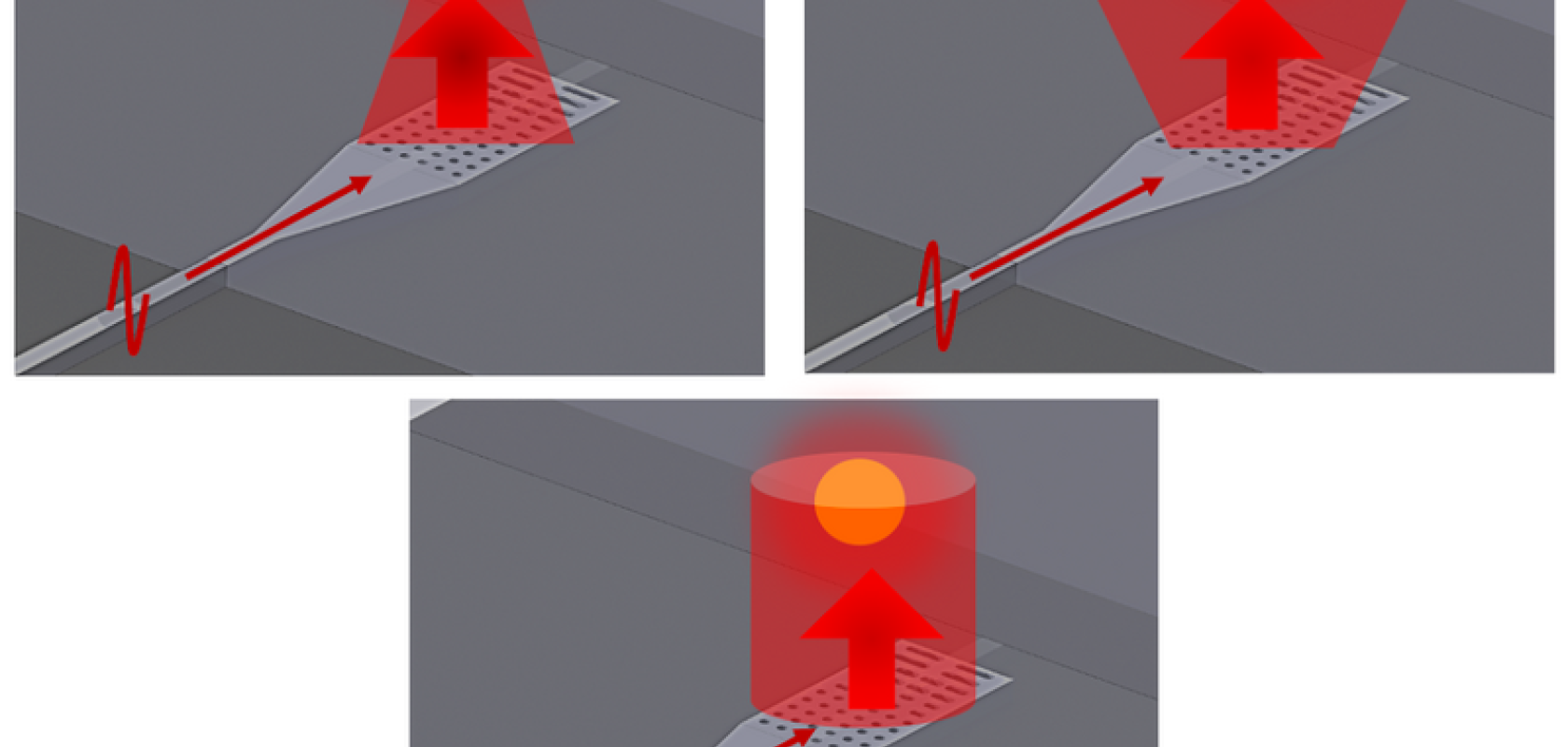MIT researchers have built a nanoscale flashlight on a chip with a beam five times more powerful than is possible with conventional structures.
The new device could be used turn cell phones into sensors capable of detecting viruses and other minuscule objects, the researchers say, or to create a variety of other nano flashlights with different beam characteristics for different applications.
In two recent papers published in Nature Scientific Reports, the researchers describe not only their approach for designing on-chip flashlights with a variety of beam characteristics, as well as building and successfully testing a prototype.
The device was created using using existing fabrication technologies familiar to the microelectronics industry, so they are confident that the approach could be deployable at a mass scale with the lower cost that implies.
Overall, this could enable industry to create a complete sensor on a chip with both light source and detector. As a result, the work represents a significant advance in the use of silicon photonics for the manipulation of light waves on microchips for sensor applications.
Singh and colleagues first used computer modelling tools to produce an optimal design that can be adapted to create flashlights with different kinds of light beams.
The researchers went on to use that design to create a specific flashlight with a collimated beam. The overall flashlight that the researchers made involved some 500 rectangular nanoscale structures of different dimensions that the team’s modeling predicted would enable a collimated beam. Nanostructures of different dimensions would lead to different kinds of beams that in turn are key to other applications.
'Silicon photonics has so much potential to improve and miniaturize the existing bench-scale biosensing schemes. We just need smarter design strategies to tap its full potential. This work shows one such approach,' said PhD candidate Robin Singh, who is lead author of both papers.


